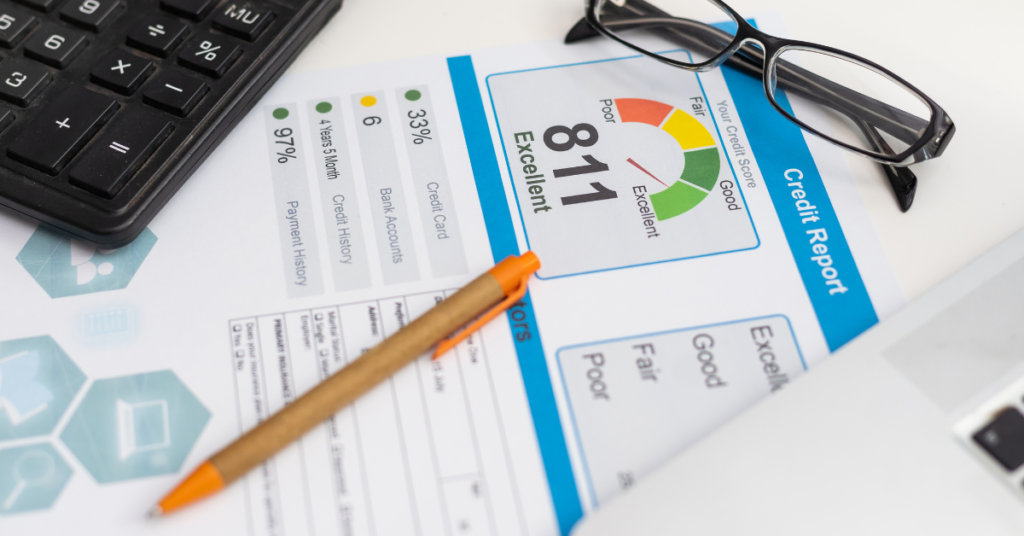Property Registration Process In Pakistan A Comprehensive Guide

Property ownership in Pakistan is a significant aspect of financial security and social status. Whether it’s residential, commercial, or agricultural land, owning property is often seen as a long-term investment and a means to secure one’s future. The process of acquiring property, however, doesn’t end with the purchase. Proper legal registration is crucial to ensure that the ownership is officially recognized and protected under the law.
Property registration is more than just a formality; it is a legal requirement that safeguards your rights as a property owner. By registering your property, you establish legal ownership, which protects you from potential disputes, fraud, and other legal complications. It also provides a clear and transparent record of ownership, making it easier to transfer or sell the property in the future.
In this blog post, we will guide you through the property registration process in Pakistan, explaining why it’s essential, what documents you need, the steps involved, and how you can complete the registration either through traditional methods or online. Whether you are a first-time property buyer or someone looking to understand the legalities better, this guide will provide you with the knowledge you need to navigate the property registration process confidently.
2. Why Property Registration is Important

Property registration is a critical step in securing your rights as a property owner in Pakistan. It goes beyond merely holding a title deed; it ensures that your ownership is legally recognized and protected, providing you with peace of mind and a range of other benefits.
Legal Security and Protection
When you register your property, it becomes an official record in the government’s registry. This legal recognition offers robust protection against any claims or disputes that may arise over the ownership of the property. Without proper registration, your ownership can be challenged, leading to potential legal battles that could be both costly and time-consuming. Registered property also has a clear legal status, making it easier to secure loans or mortgages against it, as financial institutions require proof of ownership.
Prevention of Property Disputes
Property disputes are unfortunately common in Pakistan, often arising from unclear or incomplete ownership records. Registering your property ensures that your rights are clearly documented and recognized by the law, significantly reducing the risk of disputes. This legal clarity helps prevent conflicts with family members, neighbors, or other parties who might claim ownership of your property. It also simplifies matters in cases of inheritance, where multiple heirs might otherwise contest ownership.
Benefits in Case of Resale or Inheritance
Registered property is easier to sell or transfer because it comes with a clear, legal ownership record. Potential buyers are more likely to trust the transaction, knowing that the property is legally registered and free from disputes. Additionally, if you wish to transfer the property to your heirs, having it registered ensures that the process is smooth and legally binding. It prevents potential conflicts among heirs and ensures that your property is passed on according to your wishes.
3. Types of Property in Pakistan

Understanding the different types of property in Pakistan is crucial when navigating the property market and the registration process. Each type of property comes with its own set of regulations, benefits, and challenges. Here’s a closer look at the main categories:
Residential Properties
Residential properties are designed for living purposes and include houses, apartments, and residential plots. These properties are typically located in urban and suburban areas and are intended for individuals or families to reside in. The demand for residential properties is high in Pakistan due to rapid urbanization and population growth. When registering residential property, the process generally involves verification of ownership, checking for any encumbrances, and ensuring that the property is free from legal disputes.
Commercial Properties
Commercial properties are used for business activities and can include office buildings, shops, warehouses, shopping malls, and industrial spaces. These properties are usually located in business districts or commercial zones. Registering a commercial property often requires additional documentation, such as approvals from local business authorities and compliance with zoning laws. Commercial properties tend to have a higher market value and may require more complex registration processes due to their potential for generating income.
Agricultural Land
Agricultural land is designated for farming, livestock rearing, and other agricultural activities. In Pakistan, agricultural land is often located in rural areas, and its use is strictly regulated by provincial laws. The registration process for agricultural land involves verifying the land’s intended use and ensuring that it is not being converted for non-agricultural purposes without proper approvals. Ownership of agricultural land can also be subject to inheritance laws, and disputes over such land are common, making registration a crucial step in securing ownership.
Leasehold vs. Freehold Property
In Pakistan, property ownership can be categorized as either leasehold or freehold.
- Freehold Property: This type of property ownership grants the owner full rights to the land and any buildings on it. Freehold property owners have the right to sell, transfer, or modify the property as they see fit, subject to local regulations.
- Leasehold Property: In a leasehold arrangement, the property owner (lessor) grants the right to use the property to another party (lessee) for a specified period, typically ranging from 33 to 99 years. The lessee has the right to use the property but must adhere to the terms of the lease agreement. At the end of the lease period, ownership typically reverts to the lessor, unless the lease is renewed. Registering leasehold property involves a different set of procedures, including the recording of the lease agreement and ensuring compliance with the lease terms.
4. Documents Required for Property Registration Process In Pakistan
Proper documentation is key to a successful property registration process in Pakistan. Ensuring that all necessary documents are in order before initiating the registration can save you time and prevent potential legal issues. Here’s a detailed overview of the essential documents required for property registration:

1. CNIC of the Buyer and Seller
The Computerized National Identity Card (CNIC) is mandatory for both the buyer and the seller in any property transaction in Pakistan. The CNIC serves as proof of identity and is required to verify the parties involved in the transaction. Both parties must provide original CNICs along with photocopies for the registration process. In some cases, the CNICs of witnesses may also be required.
2. Original Title Deed
The original title deed is perhaps the most crucial document in the property registration process. It serves as proof of ownership and establishes the seller’s right to transfer the property. The title deed must be free from any encumbrances, liens, or disputes. It is important to verify the authenticity of the title deed through the relevant land registry office to ensure that it accurately reflects the property’s legal status.
3. Proof of Payment (Bank Draft, Pay Order, etc.)
Proof of payment is required to show that the buyer has fulfilled their financial obligations to the seller. This can be in the form of a bank draft, pay order, or any other method of payment agreed upon by both parties. The payment receipt or proof of transaction must be attached to the registration documents to validate the transaction. This step is essential to prevent disputes over the payment of the property’s purchase price.
4. No Objection Certificate (NOC) from Relevant Authorities
A No Objection Certificate (NOC) is often required from various authorities, depending on the type and location of the property. For example, if the property is located in a housing society, an NOC from the society’s management is usually necessary. Additionally, an NOC may be required from municipal authorities, development authorities, or other regulatory bodies to ensure that the property transaction complies with local laws and regulations. The NOC confirms that there are no objections to the sale or transfer of the property.
5. Sales Deed or Agreement to Sell
The sales deed or agreement to sell is a legally binding document that outlines the terms and conditions of the property sale. It includes details such as the sale price, payment schedule, and the responsibilities of both the buyer and seller. The sales deed must be carefully drafted and signed by both parties in the presence of witnesses. It is then stamped and submitted as part of the registration process. This document is essential for transferring ownership from the seller to the buyer.
6. Mutation Documents (if applicable)
Mutation documents are necessary when there is a change in the ownership of the property, such as after a sale, inheritance, or gift. Mutation is the process of updating the land records to reflect the new owner’s name. The mutation documents must be submitted to the relevant land registry office to ensure that the new ownership is recorded in the official land records. This step is crucial for establishing the buyer’s legal ownership and preventing future disputes.
5. Step-by-Step Guide to Property Registration Process In Pakistan
Registering a property in Pakistan is a process that involves several key steps, each designed to ensure the legality and security of the transaction. Following this guide will help you navigate the property registration process smoothly.
Step 1: Verification of Property Documents
Before proceeding with any transaction, it is essential to verify the property documents. This includes:
- Checking Title Documents: Ensure that the seller has a clear and undisputed title to the property. This involves reviewing the original title deed to confirm ownership.
- Encumbrance Certificate: Obtain an encumbrance certificate from the relevant land registry office to confirm that the property is free from any legal liabilities, such as loans, mortgages, or disputes. This certificate is crucial for verifying that the property is not encumbered by any third-party claims.
Step 2: Preparation of Sales Deed
Once the property documents are verified, the next step is to prepare the sales deed. This involves:
- Drafting the Sales Deed: The sales deed is a legal document that outlines the terms and conditions of the property sale. It includes details such as the sale price, payment schedule, and obligations of both parties. It is advisable to have the deed drafted by a legal expert to ensure that all necessary clauses are included.
- Stamping the Sales Deed: After drafting, the sales deed must be stamped as per the stamp duty regulations of the respective province. The stamp duty is a government tax paid on the transaction, and the amount varies based on the property’s value and location.
Step 3: Execution of Sales Deed
The execution of the sales deed is a crucial step in the property registration process:
- Signing of the Deed: Both the buyer and the seller must sign the sales deed in the presence of at least two witnesses. The signatures must be done before a Sub-Registrar, who is authorized to register property transactions. The Sub-Registrar ensures that the parties involved understand the terms of the deed and that the transaction is conducted legally.
- Attestation: The sales deed is then attested by the Sub-Registrar, making it a legally binding document.
Step 4: Payment of Stamp Duty and Taxes
Before submitting the sales deed for registration, all applicable taxes and stamp duties must be paid:
- Payment of Stamp Duty: Stamp duty is calculated based on the property’s value and location. This duty must be paid to the government, and the payment receipt is attached to the sales deed.
- Other Taxes: Depending on the property’s type and location, additional taxes such as Capital Value Tax (CVT) or Town Tax may be applicable. These taxes must be cleared before proceeding with the registration.
Step 5: Registration of Deed
Once the sales deed is executed and all payments are made, the deed is submitted for registration:
- Submission to Sub-Registrar’s Office: The signed and stamped sales deed, along with the payment receipts, is submitted to the Sub-Registrar’s office. The Sub-Registrar reviews the documents, verifies the identities of the parties involved, and ensures that the transaction complies with legal requirements.
- Registration of Deed: Upon successful verification, the Sub-Registrar registers the deed in the official land records. This step is crucial as it legally transfers ownership of the property from the seller to the buyer.
Step 6: Issuance of Registration Certificate
The final step in the property registration process is the issuance of the registration certificate:
- Collection of the Registered Deed: After the deed is registered, the Sub-Registrar issues a certified copy of the registered deed to the buyer. This document serves as official proof of ownership.
- Mutation in Land Records: The buyer must then apply for mutation, which is the process of updating the land records to reflect the new ownership. Mutation ensures that the buyer’s name is recorded in the official land registry, making the ownership legally recognized and enforceable.
6. Online Property Registration in Pakistan

With the advancement of technology and the government’s push towards digitalization, property registration in Pakistan is becoming more accessible through online platforms. The introduction of e-registration portals has simplified the process, making it easier and faster for individuals to register their properties from the comfort of their homes. Here’s an overview of how online property registration works and what you need to know about the process.
Overview of E-Registration Portals and Digital Initiatives
The government of Pakistan, along with various provincial authorities, has launched several digital initiatives to streamline the property registration process. These online platforms are designed to reduce paperwork, minimize delays, and enhance transparency in property transactions. Some of the key portals and initiatives include:
- Punjab Land Records Authority (PLRA): Punjab has been at the forefront of digitalizing land records, offering services such as online verification of property records, issuance of Fard (ownership documents), and property registration.
- Sindh Board of Revenue: Sindh has also introduced online services for property registration and land record management, allowing users to access and verify property details digitally.
- Khyber Pakhtunkhwa and Balochistan Initiatives: These provinces are also gradually adopting digital solutions for property registration, with ongoing efforts to integrate online services into their land record systems.
These e-registration portals provide a user-friendly interface for citizens to register their properties, verify ownership, and access other related services online.
How to Use Online Services for Property Registration
Using online services for property registration in Pakistan is a straightforward process. Here’s a general guide to help you navigate these platforms:
- Access the Relevant E-Registration Portal:
- Visit the official e-registration portal of your respective province, such as the PLRA website for Punjab or the Sindh Board of Revenue’s online services portal.
- Create an Account:
- Register on the portal by providing your basic information, such as your CNIC, email address, and phone number. Some portals may also require you to verify your identity through a secure code sent to your mobile number.
- Search and Verify Property Details:
- Use the search function to verify the property details you intend to register. This includes checking the ownership records, ensuring that the property is free from disputes, and confirming the seller’s ownership.
- Upload Necessary Documents:
- Scan and upload all required documents, such as the CNICs of the buyer and seller, the title deed, the NOC, and proof of payment. Ensure that all documents are legible and in the correct format.
- Fill Out the Registration Form:
- Complete the online registration form by providing details about the property, the transaction, and the parties involved. Double-check all information for accuracy.
- Pay the Required Fees:
- The portal will calculate the applicable stamp duty, taxes, and registration fees based on the property’s value. You can pay these fees online through various payment methods, such as bank transfers, credit/debit cards, or mobile wallets.
- Submit the Application:
- After completing the form and paying the fees, submit your application through the portal. You will receive an acknowledgment receipt or tracking number, which you can use to monitor the status of your application.
- Verification and Final Registration:
- The relevant authorities will review your application and documents. If everything is in order, the property will be officially registered, and you will receive a digital copy of the registration certificate.
Benefits and Limitations of Online Registration

Online property registration offers several advantages, but there are also some limitations to consider:
Benefits:
- Convenience: You can complete the entire registration process from home without the need to visit government offices, saving time and effort.
- Transparency: Online portals provide a transparent process, with clear guidelines and real-time status updates on your application.
- Faster Processing: Digital submissions and automated workflows often result in quicker processing times compared to traditional methods.
- Reduced Risk of Errors: The online forms are designed to reduce the chances of errors by guiding you through each step with clear instructions.
Limitations:
- Digital Literacy: Some users may find it challenging to navigate online portals, especially those who are not familiar with digital tools.
- Internet Access: Reliable internet access is required to use online registration services, which may be an issue in rural or remote areas.
- Technical Issues: Like any online system, e-registration portals may occasionally experience technical glitches or downtime, causing delays in the process.
7. Costs Involved in Property Registration

Understanding the costs associated with property registration is essential for budgeting and planning your property transaction in Pakistan. The total cost of property registration includes various components such as stamp duty, registration fees, and taxes. Here’s a detailed breakdown of these costs and how to calculate them.
Breakdown of Stamp Duty, Registration Fees, and Taxes
1. Stamp Duty Stamp duty is a government tax levied on the legal documents involved in property transactions. It is one of the primary costs of property registration. The amount of stamp duty is typically calculated as a percentage of the property’s sale value or its market value, whichever is higher. The percentage varies depending on the province and the property’s location.
2. Registration Fees Registration fees are charged for the official recording of the property transaction in the land registry office. This fee is usually a fixed amount or a small percentage of the property’s value. The registration fee covers the cost of processing and maintaining the property records.
3. Taxes
- Capital Value Tax (CVT): In addition to stamp duty and registration fees, Capital Value Tax may be applicable. CVT is a tax on the property’s value, typically payable by the buyer. The rate and calculation method for CVT can vary by province.
- Other Local Taxes: Depending on the property’s location, additional local taxes or levies may apply. These can include municipal taxes or development charges.
How to Calculate Registration Costs

To accurately calculate the total registration costs for a property, follow these steps:
- Determine the Property’s Value:
- Obtain the property’s sale value or market value, as this will be used to calculate stamp duty and other taxes. This value should be mentioned in the sales deed.
- Calculate Stamp Duty:
- Check the applicable stamp duty rate for your province. Multiply the property’s value by this percentage to calculate the stamp duty amount.
- Add Registration Fees:
- Obtain the registration fee amount from the local land registry office or e-registration portal. This fee is usually a fixed charge or a small percentage of the property value.
- Include Taxes:
- Calculate the Capital Value Tax (CVT) and any other applicable local taxes based on the property’s value and provincial regulations.
- Total Cost Calculation:
- Add the stamp duty, registration fees, and taxes to get the total cost of property registration.
Example Calculation:
For a property valued at PKR 5,000,000:
- Stamp Duty (e.g., 3%): PKR 150,000
- Registration Fees (e.g., PKR 10,000): PKR 10,000
- Capital Value Tax (e.g., 1%): PKR 50,000
- Total Registration Cost: PKR 150,000 + PKR 10,000 + PKR 50,000 = PKR 210,000
Possible Variations by Province
The costs involved in property registration can vary significantly depending on the province. Each province in Pakistan has its own regulations and rates for stamp duty, registration fees, and taxes. Here’s a brief overview of how costs might differ:
- Punjab: Generally has specific rates for stamp duty and registration fees, which can be checked on the Punjab Land Records Authority (PLRA) website or at local registry offices.
- Sindh: The Sindh Board of Revenue provides information on stamp duty rates and registration fees, which can differ from other provinces.
- Khyber Pakhtunkhwa (KP): KP has its own set of rates and regulations for property registration costs.
- Balochistan: Property registration costs in Balochistan are determined by local authorities and may vary from other provinces.
It is important to consult with local authorities or visit the relevant provincial e-registration portals to get accurate and up-to-date information on registration costs for your specific location.
8. Common Challenges in Property Registration

While property registration is a crucial step in securing legal ownership, several challenges can arise during the process. Understanding these common issues can help you navigate potential hurdles and ensure a smoother registration experience. Here’s an overview of some of the most frequent challenges in property registration:
Delays in Documentation Verification
One of the most common issues encountered during property registration is delays in verifying documentation. These delays can occur due to various reasons:
- Incomplete Documentation: Missing or incorrect documents can slow down the verification process. It is essential to ensure that all required documents are complete and accurate before submission.
- Bureaucratic Processes: Government offices and land registries may experience bureaucratic delays due to high workloads or inefficiencies in processing applications. This can lead to extended wait times for verification and registration.
- High Demand: In areas with high property transaction volumes, the demand for registration services may exceed the available resources, causing delays.
Tips to Mitigate Delays:
- Double-check all documents for completeness and accuracy before submission.
- Follow up with the relevant authorities regularly to track the status of your application.
- Consider using online registration services, which may offer faster processing times.
Issues with Outdated or Inaccurate Land Records
Outdated or inaccurate land records can pose significant challenges during the property registration process:
- Discrepancies in Records: Errors or discrepancies in land records can create complications when verifying ownership and transferring property. Common issues include incorrect property descriptions, outdated ownership details, or conflicting information.
- Lack of Updates: In some cases, land records may not be updated promptly to reflect recent changes in ownership, leading to issues when attempting to register a property.
Tips to Address Record Issues:
- Verify the accuracy of land records before proceeding with the registration process.
- Request updates or corrections from the relevant land registry office if you find any discrepancies.
- Engage a legal expert or property consultant to assist in resolving record-related issues.
Dealing with Fraudulent Transactions
Fraudulent transactions and property scams are serious concerns in property registration:
- Fake Documents: Fraudsters may present fake or forged documents to deceive buyers or sellers. This can lead to legal disputes and loss of property.
- Unauthorized Transactions: Some individuals may attempt to sell properties they do not legally own or have the authority to sell, leading to fraudulent transactions.
Tips to Protect Against Fraud:
- Verify the authenticity of all documents provided by the seller, including the title deed and CNIC.
- Conduct thorough due diligence and background checks on the property and the seller.
- Use secure and reputable channels for transactions and registration.
- Consult with legal experts or property consultants to ensure the legitimacy of the transaction and to address any concerns.
9. Tips for a Smooth Property Registration Process
Navigating the property registration process can be complex, but with careful planning and the right approach, you can ensure a smooth and successful registration. Here are some essential tips to help you manage the process effectively:
1. Hiring a Competent Legal Advisor
- Expert Guidance: A competent legal advisor or property consultant can provide invaluable assistance throughout the registration process. They can help you understand legal requirements, draft necessary documents, and ensure compliance with local regulations.
- Due Diligence: An experienced advisor will conduct thorough due diligence, including verifying the authenticity of property documents, checking for any encumbrances, and identifying potential legal issues.
- Resolution of Issues: If any legal disputes or complications arise, a legal advisor can assist in resolving these issues efficiently, minimizing delays and ensuring that your property registration is completed correctly.
Tips for Choosing a Legal Advisor:
- Look for a legal advisor with expertise in property law and a good track record in handling property transactions.
- Seek recommendations from trusted sources or review client testimonials to gauge the advisor’s reputation.
- Ensure that the advisor is familiar with the specific regulations and procedures of the province where the property is located.
2. Ensuring All Documents Are in Order
- Complete Documentation: Before initiating the registration process, make sure that all required documents are complete, accurate, and up-to-date. This includes the title deed, CNICs of the buyer and seller, proof of payment, and any other relevant documents.
- Verification: Double-check all documents for any discrepancies or errors that could cause delays or complications. Ensure that documents such as the No Objection Certificate (NOC) and mutation documents are obtained from the appropriate authorities.
- Digital Records: For online registration, ensure that scanned copies of documents are clear and legible. Follow the portal’s guidelines for document uploads to avoid any issues with the submission.
Tips for Document Preparation:
- Create a checklist of all required documents and gather them in advance.
- Consult with your legal advisor to confirm that all necessary documents are in place.
- Keep copies of all documents for your records and future reference.
3. Understanding Your Rights and Obligations as a Property Owner
- Legal Rights: Familiarize yourself with your legal rights as a property owner, including the right to use, modify, and transfer the property. Understanding your rights helps you make informed decisions and protect your interests.
- Obligations: Be aware of your obligations as a property owner, such as paying property taxes, maintaining the property, and complying with local regulations. Staying informed about your responsibilities helps prevent legal issues and ensures smooth property management.
- Property Management: Consider consulting with property management professionals if you plan to rent out or develop the property. They can assist with legal compliance, tenant management, and property maintenance.
Tips for Understanding Your Rights and Obligations:
- Review local property laws and regulations to gain a clear understanding of your rights and responsibilities.
- Seek advice from legal experts or property consultants to address any questions or concerns.
- Stay updated on changes in property laws and regulations that may affect your ownership or management of the property.






